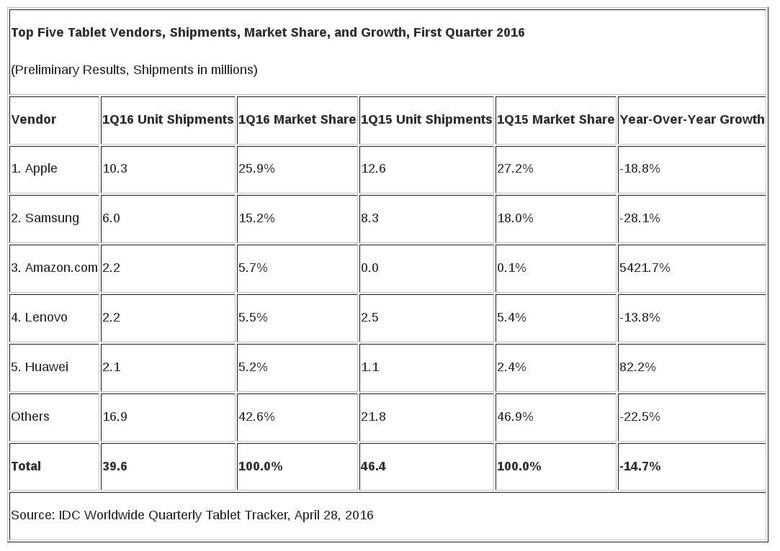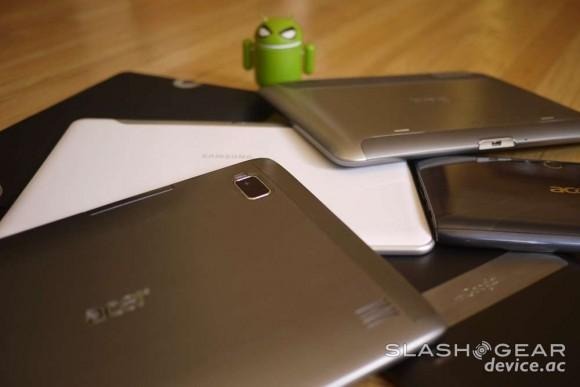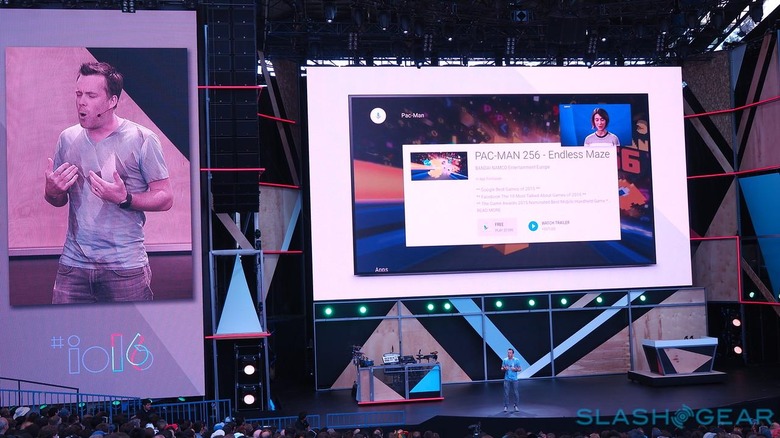Android N could save the slumping Android tablet market
When was the last time you saw or even heard of a noteworthy, particularly high-end, Android tablet? With the except of the Google Pixel C, which has its own story to tell, chances are the last ones of note were mostly launched in 2014 or prior, with a sprinkling of a few curious ones in between. Although technically there is no dearth of Android tablets in the market, interest and sales in the device segment has waned greatly in the past years. Depressing at that may sound, hope springs eternal, and that hope could very well be brought by Android N, whatever its name will be.
Market Dynamics
PCs are still the number one punching bag of analysts and pundits when it comes to a consumer electronics market segment that is declining year after year after year. Tablets, however, come a close second. With almost no exception, market figures for tablet shipments are downy by 10-15%, depending on which market analyst you ask, compared to 2015. The period from 2014 to 2015 was also bad, but not as much. Even Apple, with its much flaunted iPad, suffered losses, but it was able to stem the tide enough to rise above the rest in the past three months. And that strategy has a name. Two actually: "iPad Pro" and "iOS 9".

Unsurprisingly, other players in the tablet market tried to follow suit. Samsung came up with the perhaps mislabeled Galaxy TabPro S, no relation to the previous Galaxy Tab Pro line except in name. But that is a Windows tablet, so we'll ignore it for this piece.
Google, however, was a bit bolder. It launched its Pixel C tablet so close to the iPad Pro and so similar to it that the temptation to compare the too was almost too easy. Much of how the Pixel C failed to live up to the expectation that Google set up is pretty much well-documented by now, even by our own review. Suffice it to say, Google got half of the formula right, but neglected the other half, with disastrous results.
The Tides of Change
The decline of the tablet market and the lack of high-quality Android tablets form a vicious cycle, one feeding the other like a ouroboros. To say that people are losing interest in tablets would be an oversimplification. Sales numbers for the likes of the iPad Pro, Surface, and renewed sales of older iPads would contest such an assumption. It is perhaps more accurate to say that the habits and needs of users have changed, and Android in general hasn't been able to quickly adapt when it could have actually beaten iOS to the punch. Ironically, it is also partly because of Android's more inclusive nature that its tablets are feeling the bite.
Tablets were initially marketed basically as overgrown smartphones. They offered a device that you could more comfortably use for those cases where a smartphone's screen, then still around 4 to 4.5 inches, were ill fit to address. Back then, that mostly revolved around watching videos, reading books, browsing the web, and the occasional e-mail or document editing. While tablets may still be a better fit for those, smartphones have evolved to make those tablet advantages practically redundant.

Like it or not, the baseline for smartphones these days is 5 to 5.2 inches, especially in the Android world. The iPhone 6s' 4.7 inches comes close but even the iPhone SE is now considered an outlier rather than the norm. With Android, however, there is almost no upper limit. You can and will even seen "smartphones" as big as 7 inches, the smallest conventional tablet size. This is where things get murky and where Android tablets start to slip.
Thanks to a lack of higher end tablets and the seeming lower demand for those, a large percentage of Android OEMs have stuck to saturating the market with low to mid range offerings. These can practically be sorted into buckets of 7, 8, 9.7, and 10.1 inches. The bigger tablets do offer bigger screens but, as exemplified by the Galaxy Tab S2, they don't exactly offer significantly beefier performance. On the other end of the spectrum, smaller tablets don't exactly offer much advantage over phablets.
In a nutshell, smartphones today have reached a point where even a mid-range model like the newly unveiled Moto G Plus can pretty much do what a tablet was designed for, both in performance and sometimes even in screen quality. Sure, there are things that a smartphone can't still comfortably do, but, sadly, Android tablets have failed to grab that bull by the horns.
The Tablet Renewed
It is perhaps a bit amusing to consider that the new tablet trend could perhaps be attributed to Microsoft and the Surface Pro. Intentionally or not, they shed a light on the new trend in tablets. They're not consumer devices anymore. Their bigger screens aren't just meant for gawking at pictures and videos anymore. People want to do more with them. And Apple delivered with iOS 9 and the iPad Pro.
It is almost ironic that Apple jumped in there first considering how a good many people consider iOS to be the less "productive" platform for work, for various reasons including how it doesn't expose a filesystem of any sort. Over the years, however, iOS users have either been able to work around those limitations or Apple eventually provided much requested features. With the iPad Pro, Apple even went the extra mile to woo artists and creatives.
The professional/productivity bent wasn't really just limited to the iPad Pro. Unless your definition of professional/productivity does revolve around the use of a stylus. iOS 9 brought those features down even to older iPad models, to varying degrees. To be specific, it brought Split Screen, Slide Over, or even Picture in Picture functionality to some iPads, even the iPad mini. In short, Apple transformed its more recent batch of iPads into "prosumer" devices. Just what the doctor ordered.

That was actually what the Pixel C lacked that earned it the not so amused reviews. It presented itself clearly as an iPad Pro competitor and a productivity device but stopped short of making true the latter. Some will argue that Android is already more productive than iOS and, to some degree, that is true. But users shouldn't have to install third party ROMs or software in order to get features that should already be built in. And, after all, Android already had the capability years ago.
Raised to the Power of N
The situation is almost comical in its irony. Even before iOS 9 or even Windows 8 was doing split screens, Samsung was already doing the same on Android. Though much derided for its heavy customization, TouchWiz brought a few features on the tablet that Samsung's rivals would copy only later. And inspired by Samsung's idea but irked by its exclusivity, Android hackers and modders implemented similar, sometimes even better, features, though sometimes with the requirement of rooted (jailbroken, for you iOS readers) devices. In short, Android was already capable of those features and the idea was already in use years before recent events. Unfortunately, Google wasn't so eager to make it official, for reasons we will probably never know.
The good news is that, even if belatedly, Google has finally listened. Split windows and picture-in-picture will hardly be the most significant features of Android N, but they could very well be the break Android tablets need. Android already exposes its filesystem. It lets you handle files like you would on a PC or Mac. It even lets you choose your preferred apps. Android is already primed for productivity, but it still needs finishing touches like Android N to bring it all together into a coherent whole that users will be able to take advantage of from day one.

Incidentally, with a push for more productivity and work focused tablets, OEMs might be forced to beef up their products to meet the new level of expectation. It could once again drive tablets to become more premium than they are today. Sure, there will always be cheaper, lower end, or even smaller selections, like Amazon's Fire tablets. But those will need to have something else to offer, like Amazon Prime, or address a different market, like users who don't have smartphones yet.
Final Thoughts
Tablets are all grown up, from passive content consumption devices to more dynamic productivity computers. People may not really need tablets that can replace their PCs, though some would probably really want one. They do need, however, a reason to see a tablet as a different and worthwhile device that isn't just an overgrown smartphone anymore. Smartphones, especially higher end phaablets, can pretty much do most of what tablets have been doing, Given a choice between buying a $400-600 high end phablet or buying a $300 mid-range smartphone plus a $300 mid-range tablet, chances are consumers will gravitate to the first option that won't have them carrying two devices instead of just one.
Android N can do just that, especially if Google gets it right the first time. It can turn a tablet into both a consumer and a producer and certainly gives users more ways to enjoy the device. It could also give OEMs less reason to diverge from pure Android, which could, in turn, make custom skins like TouchWiz even lighter.

Google will hardly go overboard and start reskinning Android the way Jide does for Remix OS. And that's just fine. Even without real floating windows, task bars, and whatnot, there will be ways people can be productive on Android, given the new tools. There will always be room for the likes of Remix OS and other such projects, which could, like before, inspire a new trend in mobile computing. Hopefully, this time, Google will be able to read the signs earlier and better and adapt faster as well.
